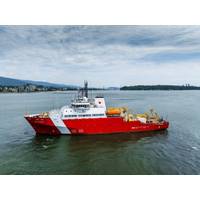
CCG's New Offshore Oceanographic Science Vessel Begins Sea Trials
systems—are fully operational.On completion of sea trials, CCGS Naalak Nappaaluk will be prepared for delivery to the Canadian Coast Guard by the end of the summer, before sailing to the Bedford Institute of Oceanography in Halifax, NS, where the ship will be based.The OOSV will be Fisheries and Oceans Canada’s primary oceanographic science platform, outfitted for habitat management, marine surveys and scientific research on ocean currents and the seabed, while also being able to serve the needs of the Canadian Coast Guard, aiding in operations such as Search and Rescue.This milestone

Canada Trials S-100 on St. Lawrence River
The Canadian Hydrographic Service (CHS), under Fisheries and Oceans Canada, is taking a leading role in validating new digital hydrographic standards, with the Minister of Fisheries, Joanne Thompson, launching S-100 sea trials on the St. Lawrence River.The S-100 data model is a new global standard created by the International Hydrographic Organization (IHO), which offers a new way of visualizing the marine environment using layered, interactive digital data that can be added to navigational charts. Unlike traditional paper or electronic charts, the new standard integrates real-time information –
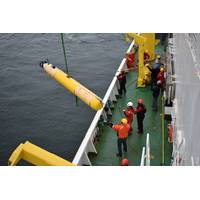
MBARI Research Supports Cryospheric Science
can help guide policymakers’ decisions about underwater infrastructure in the Arctic. This summer, MBARI researchers will return to the Canadian Beaufort Sea to continue this work.MBARI’s collaborators on this body of work include researchers at the Geological Survey of Canada, Fisheries and Oceans Canada, the Korean Polar Research Institute, and the US Naval Research Laboratory.MBARI is part of the Southern Ocean Carbon and Climate Observations and Modeling (SOCCOM) project, an international, multi-institutional effort to help researchers better understand the Southern Ocean, one of the
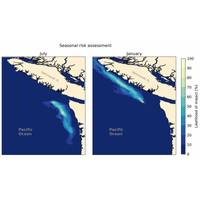
NOAA: Operational Forecast System Informs Shipwreck Oil Spill Scenarios
remaining in the fuel tanks. The quantity onboard the Coast Trader is equivalent to 60% of the volume of fuel spilled into the Pacific Ocean near Grays Harbor by the barge Nestucca in 1988, which remains one of Washington’s largest and most damaging oil spills.In collaboration with Fisheries and Oceans Canada (DFO), NOAA’s Office of Response and Restoration (OR&R) began a comprehensive assessment of potential impacts from the Coast Trader’s fuel in the event that corrosion leads to a release of oil. As part of this assessment, the team used NOAA’s GNOME trajectory
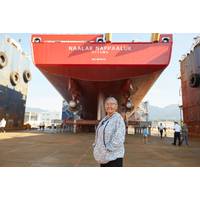
CCG’s Science Vessel CCGS Naalak Nappaaluk Launched
;s flagship science vessel, CCGS Naalak Nappaaluk.The fourth ship designed, built and launched by Seaspan under the National Shipbuilding Strategy, the Offshore Oceanographic Science Vessel (OOSV) is a floating laboratory that will serve as the primary oceanographic science platform for Fisheries and Oceans Canada. As a Polar Class 6 vessel, it will be a highly advanced ice capable ship equipped with the latest scientific research systems. The new ship will provide increased capability and capacity to support marine surveys and scientific research on ocean currents and the seabed in Atlantic Canada
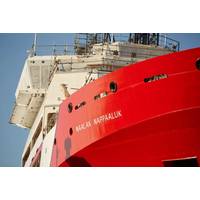
Canada Launches Offshore Oceanographic Science Vessel
named the Canadian Coast Guard Ship (CCGS) Naalak Nappaaluk.As the Canadian Coast Guard’s largest dedicated science vessel, the new ship will provide increased capability and capacity to support ocean science missions on Canada’s east coast. It will accommodate up to 34 crew and 26 Fisheries and Oceans Canada scientists and will be stationed at the Bedford Institute of Oceanography in Dartmouth, Nova Scotia.Built by Seaspan Shipyards, the CCGS Naalak Nappaaluk is equipped with a deck that can swap out different equipment modules based on mission requirements, a marine mammal observation station
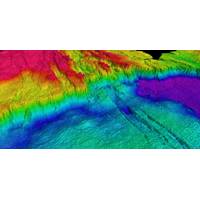
DISCOVERY: High-Res Mapping Tech Helps Find New Hydrothermal Vent Field
institutions included Memorial University of Newfoundland, University of Victoria, Dalhousie Press Release University, University of Ottawa, The Japan Agency for Marine-Earth Science and Technology, The United States Geological Survey, University of Quebec at Romouski, Kraken Robotics, and Fisheries and Oceans Canada.Anemone on volcanically formed geological structure on the seafloor. Technology that creates finely detailed maps allowed scientists to locate new hydrothermal vents surrounding the Galápagos, and characterize the chemicals they emit and the animals that live on them.Photo from
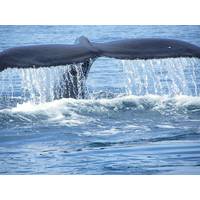
North American Lobster Industry Confronts 'Ropeless' Traps After Whale Entanglements
Feeding in the midst of the Gulf’s busy shipping lanes and active snow crab and lobster fisheries, North Atlantic Right Whale deaths surged to 15 in that year alone, with five attributed to vessel strikes and the rest to either entanglements or unknown causes.Brett Gilchrist, director of Fisheries and Oceans Canada, said Ottawa immediately implemented new measures to protect the whales, reducing ship speeds, and requiring the fishing industry to use weak rope links in their lines.The government also began aerial and acoustic monitoring, allowing it to close areas to fishing when a whale is spotted

Canada: Tidal Energy Firm Says Enters Bankruptcy as Regulatory Hurdles Derail Planned Project
placed into voluntary bankruptcy and appointed Deloitte Restructuring Inc. as trustee.The company, which proved out its technology and delivered power to Nova Scotia’s grid, said Monday it had not been able to secure the authorizations it had required or agree a viable path forward with Fisheries and Oceans Canada (DFO) that would enable it to deliver its flagship demonstration project at the Fundy Ocean Research Center for Energy (FORCE) tidal energy demonstration site in the Minas Passage. "Because of this, Sustainable Marine is not able to meet its obligations to its project financing
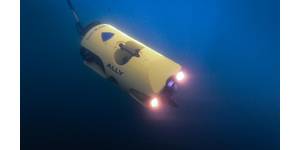
 February 2025
February 2025




